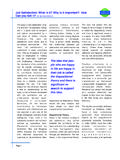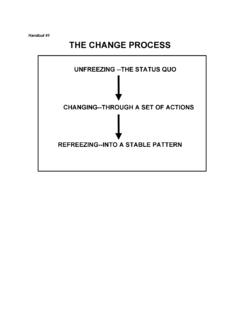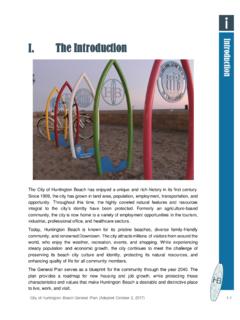Transcription of Kotters Eight Steps of Change”
1 Page 1 Moving Your Organization Ahead by Kevin Scheid We are often asked the question, What should I do to improve our staff engagement? Culture change is a difficult task to achieve for any leader. Leaders we work with to help transform their organizational culture are surprised how hard they have to work to see real improvements. Our previous article in this series dealt with the initial aspect of organizational change , or unfreezing your organization. We highlighted Kotter s (1997) Eight Steps to organizational change to established these Steps as a guideline for an examination of the process.
2 The Eight Steps include: a sense of Create a powerful a Communicate the Empower the Achieve quick Consolidate the positive the addressing the first two Steps we discussed the importance of leaders recognizing the need for change to be proactive and ahead of the changing environment instead of reactive. Once urgency for change is established, the leader must then have a coalition of supporters for the change . Individuals with affective commitment, those who deeply believe in the mission of the organization and who will more readily commit to an organizational change , are generally the people you want to have in your coalition of supporters.
3 On the other hand, people with average commitment levels will likely commit only if they believe their job is at stake. Understanding the level of staff commitment will assist in selecting the right people for the coalition of change who will be able to influence other employees. Moving the organization ahead. This article will discuss moving your organization , which occurs after the process of unfreezing and before institutionalizing the change . Moving the organization includes items three through five on Kotter s (1997) list.
4 However, it is important to keep in mind that these Eight Steps overlap each other considerably and much of the effort should be completed concurrently. For instance, creating a sense of urgency and a powerful coalition of supporters cannot be done before there is some level of consensus on the direction and vision for the organization. So, leadership must begin the development of a vision before Steps one and two are completed. Finally, we will compare the results of the BCWI survey results with Kotter s Steps to examine employee perceptions of change in Christian organizations in the context of this model.
5 The intent is not to provide an in depth examination of each step since each step such as creating a vision or Communicate for Buy-inEmpower ActionCreate Short-term Wins645 Don t Let UpMake it Stick78 Increase UrgencyBuild the Guiding TeamGet the Right Vision231 Kotters Eight Steps of change 5 Kotter, John P. and Cohen, Dan S. The Heart of : Harvard Business School PressEngaging and enablingthe whole organizationCreating aclimate for changeImplementingand sustainingchangePage 2 Moving Your Organization Ahead by Kevin Scheid empowering the workers are major organizational study areas with massive research already behind them.
6 Rather, the intent is to provide a discussion of how these major components such as visioning, communication and empowerment fit with and create organizational change . Creating a vision Creating a vision , or direction, for your organization provides a visual roadmap showing the way to change . According to Wheatly (2003), senior managers report that nearly 75% of all change processes do not yield the expected results. Having the right roadmap for change will help an organization end up where they desire. Without a vision there is a tendency to skip over the process of transitioning people and jump right to institutionalizing the change through fiat.
7 A vision is a key ingredient in helping people transition through the change . Bridges (2003) illustrates some of the difficulties in transitioning people by addressing the needs of people during a change . People need to know why there is a need to change , how to deal with letting go of the old system, how to live with ambiguity and complexity during the transition period and how to become engaged with the new system. Clawson (2007) has a similar approach to addressing the transition of people during organizational change .
8 People in transition have definite needs explained by Clawson as: Four Ps of change : purpose (derived presumably from some felt pain), picture, plan, and part. They represent, in essence, a manager s view of Beer s equation: If people don t see a purpose for the change , if they don t see where they re trying to go, if they don t see a plan for how to get there, and if they don t see a part that they can play in the plan, they re not likely to participate in the change effort and it will flounder and/or founder (Clawson 285).
9 Developing a vision is the first critical step in addressing many of these issues and in transitioning people through a change . A vision answers the question of where the organization is headed, helps people understand why the change is needed then lays the groundwork for developing individual roles to accomplish the change . Starting the Visioning Process with the Truth One of the many roles of a leader is to identify and articulate the truth of the present situation. The leaders assessment of truth must be somewhat congruent with the belief of people in the organization.
10 It is unlikely that everyone will agree with all aspects of a leader s assessment, but it must be fairly close to a consensus view of the organization if the vision and a new direction are to be accepted (Clawson, 2007). Once consensus on the present status of the organization is established, agreement on a path to improvement can proceed. Without agreement on the present situation, it is unlikely that agreement will develop as to a path forward. An excellent way to discover and agree on the truth of the present situation is to complete a Best Christian Workplaces Survey of all employees.









